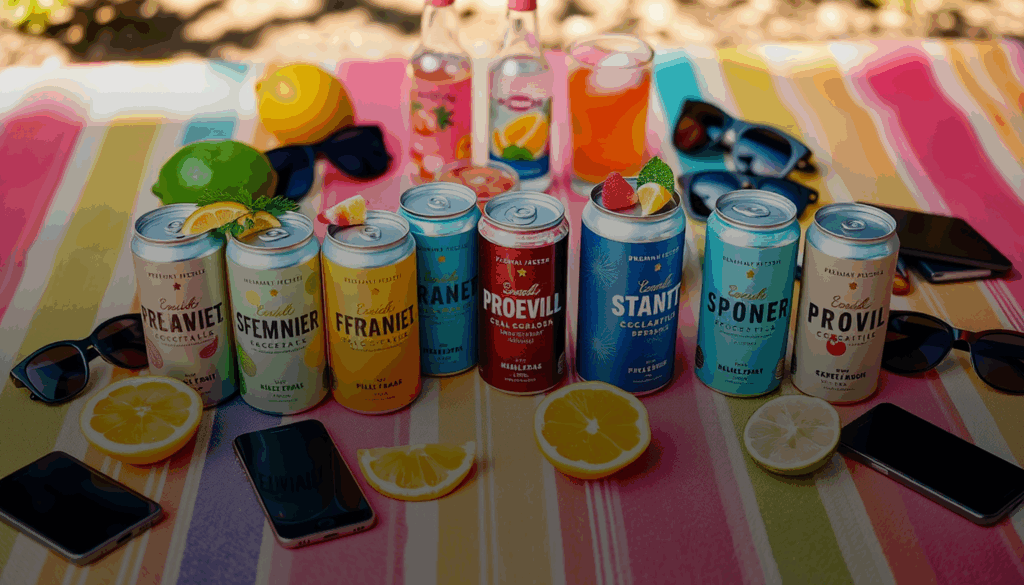The ready-to-drink (RTD) sector has evolved from a convenient novelty into a transformative force within the global beverage industry. Once dismissed as sugary alcopops, today’s RTDs range from premium canned cocktails to functional teas and botanical blends—meeting the demand for flavour, portability, and wellness. Drawing from reports by The Spirits Business, Talking Retail, and Fortune Business Insights, this commentary explores the drivers behind the RTD boom and what they signal for the future of beverage innovation.
Rapid Growth Backed by Consumer Trends
According to The Spirits Business, global RTD volumes rose by 2% in 2023, with both volume and value projected to grow at a CAGR of 3% through 2028. The category—especially canned cocktails—continues to outperform traditional segments, even as overall innovation slows. In the UK alone, off-trade RTD sales have surged from £228m in 2014 to an estimated £543m in 2024. Key growth markets such as Brazil, Germany, and Australia are helping drive international expansion.
Talking Retail reports similar momentum in the UK convenience sector, with RTD sales growing 12.6% year-on-year, now worth over £226m. Brands like Four Loko and Jack Daniel’s & Coca-Cola have successfully captured Gen Z and Millennial audiences with high-ABV, flavour-forward products, ideal for festivals, outdoor gatherings, and impulse buys. Meanwhile, Fortune Business Insights projects the global RTD market will climb from $804.87bn in 2025 to $1.2tn by 2032, driven by urban lifestyles, functional beverage demand, and premiumisation.
From Trend to Transformation
Several converging factors are fuelling this growth:
- Convenience and Portability: RTDs meet the need for grab-and-go refreshment without compromising on flavour or strength.
- Premiumisation: Consumers are increasingly seeking bar-quality cocktails at home. Higher-ABV options like Margaritas and Espresso Martinis in sleek cans are thriving.
- Health and Functionality: From low-sugar spirits to kombuchas and botanical infusions, wellness-forward RTDs are gaining traction, especially in Asia Pacific, which currently leads global market share at 35.7% (Fortune Business Insights).
- Format Innovation: While canned cocktails dominate growth, interest in kegged and bag-in-box formats is rising—particularly among sustainability-conscious consumers and on-trade venues.
However, growth is not without constraints. As The Spirits Business notes, regulatory and tax hurdles—especially on high-ABV spirit-based RTDs—continue to hinder expansion in some markets. Australia’s excise system, for instance, places a significant burden on domestic producers, affecting global competitiveness. In parallel, concerns over sugar content and increased packaging taxes (such as the UK’s upcoming glass tax in 2025) could impact pricing and accessibility.
Strategic Implications for Industry Players
The RTD surge presents both opportunities and challenges:
- For Manufacturers: The maturation of the RTD category demands smarter innovation over sheer novelty. Brands must balance indulgence with health, and sustainability with shelf appeal.
- For Retailers: As consumers favour premium, portable, and impulse-friendly formats, merchandising strategies must adapt—especially in high-traffic or seasonal contexts.
- For the Wider Industry: The RTD boom reflects a broader shift in drinking culture, where convenience, experience, and functional benefits now take priority over tradition.
Looking Ahead
The RTD category is no longer a niche—it’s a foundational pillar of modern beverage strategy. If current trends persist, expect continued crossover between alcoholic and non-alcoholic innovations, greater globalisation of flavours, and more sustainability-led packaging shifts. For beverage stakeholders, the message is clear: adapt now, or risk being left behind in a rapidly redefined marketplace.
